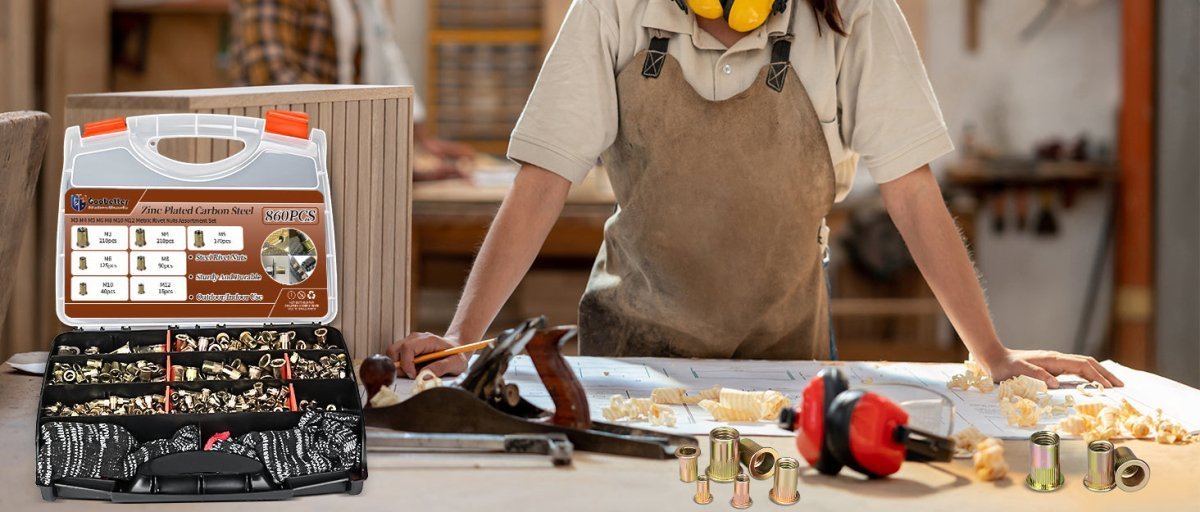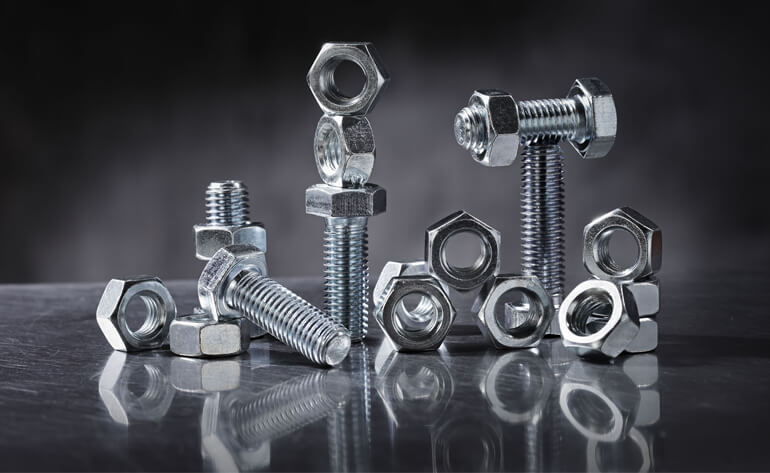Table of Contents
- The Engineering Marvel Behind Rivet Nuts
- Industrial vs. Consumer Applications: Rivet Nut Advantages
- Anatomy of a Perfect Rivet Nut Installation
- Why Cheap Alternatives Fail (And How a Real Rivet Nut Kit Saves You)
- Step-by-Step: Professional Installation with a Rivet Nut Tool Kit
- 7 Must-Have Features of a Quality Rivet Nut Kit
- Beyond Basics: Advanced Rivet Nut Techniques for Pros
- Rivet Nut FAQ: Answering Your Most Pressing Questions
- Case Studies: Real-World Rivet Nut Success Stories
The Engineering Marvel Behind Rivet Nuts
A Brief History of Threaded Fastening Solutions
Rivet nuts were patented in 1936 by BF Goodrich as an aircraft manufacturing solution when thin aluminum skins couldn't support traditional nut-and-bolt assemblies. Today, these fasteners have evolved into precision components used across industries.
The Physics of How Rivet Nuts Work
Unlike traditional nuts that simply thread onto bolts, rivet nuts perform mechanical magic:
- Knurled body bites into host material
- Radial deformation when installed with a rivet nut tool kit
- Creates both mechanical grip and friction
- A flange distributes the load across the surface
Pro Tip: The best rivet nut kits (like our 860pc Professional Kit) apply precisely calibrated force for optimal deformation without damaging brittle materials.
Industrial vs. Consumer Applications of Rivet Nuts
Rivet nuts are a great companion for heavy industrial work
- Aerospace: Boeing 787 Dreamliner uses 20,000+ rivet nuts in composite fuselage panels
- Automotive: Tesla's aluminum-intensive models rely on rivet nuts for battery pack mounting
- Rail: Vibration resistance makes them ideal for train interior components
Home Workshop Heroes - Rivet nuts
- Garage Organization: Create threaded points for tool boards without welding
- RV Modifications: Add secure mounting points to thin aluminum skins
- Custom Bike Building: Create clean mounting solutions for accessories
- 3D Printer Upgrades: Reinforce plastic frames with metal thread inserts
"After trying pliers and makeshift solutions, getting a real rivet nut tool kit was like discovering power tools after years of hand drills." - Mark T., DIY Enthusiast
Anatomy of a Perfect Rivet Nut Installation
Rivet Nuts Provide Key Data Indicators
- Hole Size: Typically 0.1-0.3mm larger than rivet nut body
- Grip Range: Must match material thickness (varies by rivet nut type)
- Flange Selection: Countersunk vs. standard flange depends on surface requirements
Rivet Nut Common Installation Errors
- Under-compression: Causes loose fittings that spin
- Over-compression: May crack brittle materials
- Misalignment: Creates cross-threading issues
This is where a professional rivet nut tool kit with calibrated force settings becomes invaluable - it removes the guesswork.
Why Cheap Alternatives Rivet Nut Fail
The Pliers-and-Bolt Method (And Why Pros Cringe)
While YouTube might show DIY installations with basic tools, these methods often result in:
- Uneven deformation causes insufficient holding power
- Stripped threads during installation
- Material damage from excessive force
The right rivet nut increases efficiency
A quality rivet nut tool kit delivers: ✔ Prevents costly material damage ✔ Reduces installation time by 70%+ ✔ Ensures reliable results every time
Our tests show the 860pc Professional Kit can install 50 rivet nuts in the time it takes to install 5 with pliers.
Professional Installation Steps with a Rivet Nut Tool Kit

Preparation Phase
- Evaluate material thickness
- Select rivet nut style (aluminum or steel)
- Drill pilot hole (use a sharp bit to prevent burrs)
Installation Process
- Tool Setup: Select the correct mandrel for the rivet nut size
- Loading: Thread the nut onto the tool until snug
- Insertion: Place the assembly into the pre-drilled hole
- Compression: Apply steady, even pressure until "pop" is heard
- Inspection: Verify full flange contact and thread integrity
Advanced Technique: For soft materials, apply masking tape around the hole to prevent surface damage during installation.
7 Must-Have Features of a Quality Rivet Nut Kit
After testing 12 leading kits, we identified these non-negotiable features:
- Precision-Machined Mandrels (hardened steel resists deformation)
- Ergonomic Lever System (compound action reduces hand fatigue)
- Universal Jaw Design (fits both metric and SAE sizes)
- Quick-Change Mechanism (for efficient size switching)
- Included Carry Case (keeps mandrels organized - no lost parts)
- Comprehensive Size Range (M3-M10 covers most applications)
- Replacement Part Availability (because even quality tools wear)
The Homediyer 860pc Kit uniquely offers all seven plus additional nylon inserts for plastic applications.
Advanced Rivet Nut Techniques
Some Of Rivet Nut Blind Area Installations
When you can't access the backside:
- Use extra-long mandrels
- Create temporary support with modeling clay
- Verify pull-out strength with test samples
Rivet Nut Provides Composite Material Solutions
For carbon fiber or fiberglass:
- Choose stainless steel rivet nuts to prevent galvanic corrosion
- Use lower compression settings
- Apply sealant around the flange
High-Vibration Environments
- Thread locking compounds
- Double-flange designs
- Post-installation torque testing
Rivet Nut FAQ
"Can I install rivet nuts in plastic?"
Yes - but use:
- Special low-compression nuts
- Oversized flanges
- Our kit's nylon inserts
"How do I remove a rivet nut?"
Professional methods:
- Drill out the center with a left-hand bit
- Use the extraction tool from a quality rivet nut kit
- Clean the hole before reinstallation
"What's the rivet nut weight capacity?"
Varies by size/material:
- M4 aluminum: ~200 lbs shear strength
- M8 steel: ~1,200 lbs
Real-World Case Studies of Rivet Nut
Case 1: Food Truck Build
Challenge: Mount stainless steel equipment to thin aluminum walls
Solution: Installed M6 stainless rivet nuts with our pro kit
Result: Withstood 3 years of daily road vibration
Case 2: Classic Car Restoration
Challenge: Repair rusted-out fender mounts
Innovation: Used countersunk rivet nuts for a flush finish
Outcome: Achieved museum-quality restoration
The Final Verdict About Rivet Nut
From aerospace factories to home garages, rivet nuts solve fastening challenges that have frustrated engineers for decades. While makeshift methods exist, professionals know: Investing in the right rivet nut tool kit means never compromising on installation quality.
Ready to work like a pro? Explore our 860pc Professional Rivet Nut Kit - the most comprehensive solution for craftsmen and DIYers.

Have rivet nut success stories? Share your experiences below! What creative applications have you discovered? 🚗✈️🔧








